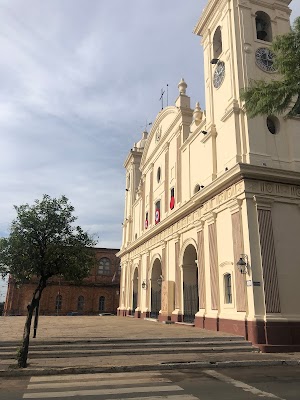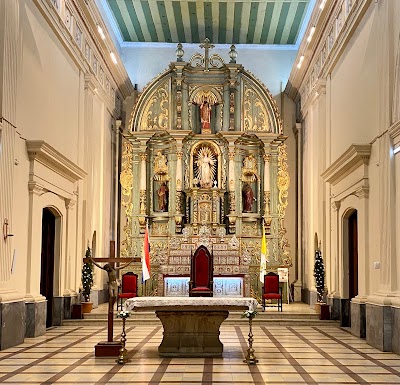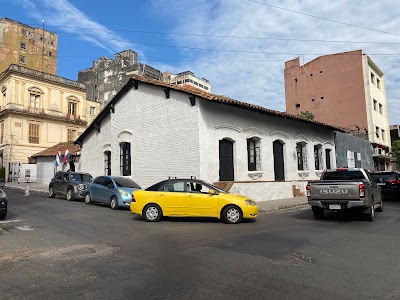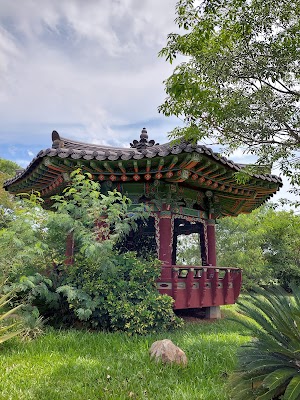Catedral Metropolitana de Asunción (Catedral Metropolitana de Asunción)
Overview
The **Catedral Metropolitana de Asunción**, also known as the Metropolitan Cathedral of Our Lady of the Assumption, is a remarkable historical and spiritual landmark nestled in the heart of Asunción, Paraguay. As the country's premier Catholic church, it stands as a testament to Paraguay's rich colonial history while serving as a vibrant hub for religious activities and cultural events.
The origins of the Catedral Metropolitana trace back to the early Spanish colonization, with the first church established on the site in 1537. The grand structure we see today was completed in 1845 under the governance of Carlos Antonio López. Its architecture showcases a stunning blend of neoclassical styles infused with local influences, highlighted by an impressive façade adorned with grand columns and a central dome that dominates the Asunción skyline.
One of the cathedral's most significant roles is its position at the heart of Paraguay's religious and cultural life. Serving as the seat of the Archdiocese of Asunción, it is the epicenter of Catholicism in the country, hosting numerous religious ceremonies, including the annual Feast of the Assumption on August 15th. This event draws pilgrims and visitors from across the region, making it a vibrant celebration of faith and community.
Inside the cathedral, visitors are treated to a stunning collection of religious art and artifacts that span several centuries. The interior features beautifully crafted altars, intricate wooden carvings, and breathtaking stained-glass windows that depict various saints and biblical scenes. Among these, the main altar dedicated to the Virgin of the Assumption stands out, showcasing meticulous craftsmanship and deep devotion.
The **Catedral Metropolitana** also holds profound historical significance beyond its religious functions. It has witnessed many pivotal moments in Paraguayan history, including periods of conflict and political change. Notably, during the War of the Triple Alliance (1864-1870), the cathedral became a symbol of resilience for the local population, embodying the enduring spirit of the Paraguayan people.
For tourists, the cathedral offers a unique glimpse into the country's religious practices and an educational journey through Paraguay's past. Guided tours provide insights into the historical context of the cathedral's construction, its architectural features, and the various artifacts housed within its walls. These tours often include visits to the adjacent piazza and other nearby historical sites, offering a comprehensive view of Asunción's colonial heritage.
An intriguing aspect of the **Catedral Metropolitana de Asunción** is that it houses the tomb of Carlos Antonio López, the very president who oversaw the completion of the current cathedral. This connection adds a layer of historical intrigue, allowing visitors to engage directly with a pivotal figure in Paraguayan history while exploring this sacred space.
Another highlight for visitors is the beautiful clock tower, which offers panoramic views of the city. Climbing the tower provides a unique opportunity to see Asunción from a different perspective, capturing the blend of modernity and tradition that defines the city.
The cathedral’s central location in downtown Asunción makes it easily accessible for tourists. Its proximity to major attractions such as the **Palacio de los López** (Government Palace), the **Cabildo** (Cultural Center), and the **Panteón Nacional de los Héroes** (National Pantheon of Heroes) allows visitors to experience a rich tapestry of Paraguayan history and culture—all within a short walking distance.
In summary, the **Catedral Metropolitana de Asunción** is more than just a place of worship; it is a historical monument, a cultural treasure, and a beacon of resilience and faith for the Paraguayan people. Whether you're a history enthusiast, an architecture buff, or a curious traveler, a visit to this cathedral will undoubtedly enrich your understanding of Paraguay’s vibrant cultural heritage.







